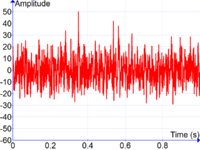Statistical signal processing

Statistical signal processing sounds like a very big and complicated thing, but it basically means using maths to understand and analyze signals like sounds, images or even data patterns.
Imagine your mom telling you to clean your room. Your mom's voice is a signal that goes into your ears and your brain processes it to carry out her instructions. Similarly, in the world of statistics, we study signals and noise that we receive, and we try to figure out what information is hidden in them.
For example, when you play a game on a computer, it sends thousands of signals to the computer's processor to make sure that the game is running smoothly. If the game starts to lag, it's because of a delay in the signals being transmitted, due to some noise, like slow internet speed. Statistical signal processing can help us analyze this data to understand what's causing the lag and solve the problem.
Signal processing also helps us to improve the quality of signals. Imagine you are listening to your favorite song, but there is a lot of background noise. Statistical signal processing can filter out the noise, so that you can hear the song more clearly.
Statistical signal processing can also be used to detect patterns in signals. For instance, you might have a lot of data about your favorite sports team, but it's not organized in a way that's easy to understand. Statistical signal processing can help you to analyze the data, uncover hidden patterns, and create visual representations of the data. This helps us to make better decisions, and understand the world around us.
In summary, statistical signal processing is a technique of using maths to study signals, noise, and data patterns that can help us solve problems, improve quality, and make better decisions.
Imagine your mom telling you to clean your room. Your mom's voice is a signal that goes into your ears and your brain processes it to carry out her instructions. Similarly, in the world of statistics, we study signals and noise that we receive, and we try to figure out what information is hidden in them.
For example, when you play a game on a computer, it sends thousands of signals to the computer's processor to make sure that the game is running smoothly. If the game starts to lag, it's because of a delay in the signals being transmitted, due to some noise, like slow internet speed. Statistical signal processing can help us analyze this data to understand what's causing the lag and solve the problem.
Signal processing also helps us to improve the quality of signals. Imagine you are listening to your favorite song, but there is a lot of background noise. Statistical signal processing can filter out the noise, so that you can hear the song more clearly.
Statistical signal processing can also be used to detect patterns in signals. For instance, you might have a lot of data about your favorite sports team, but it's not organized in a way that's easy to understand. Statistical signal processing can help you to analyze the data, uncover hidden patterns, and create visual representations of the data. This helps us to make better decisions, and understand the world around us.
In summary, statistical signal processing is a technique of using maths to study signals, noise, and data patterns that can help us solve problems, improve quality, and make better decisions.
Related topics others have asked about:
